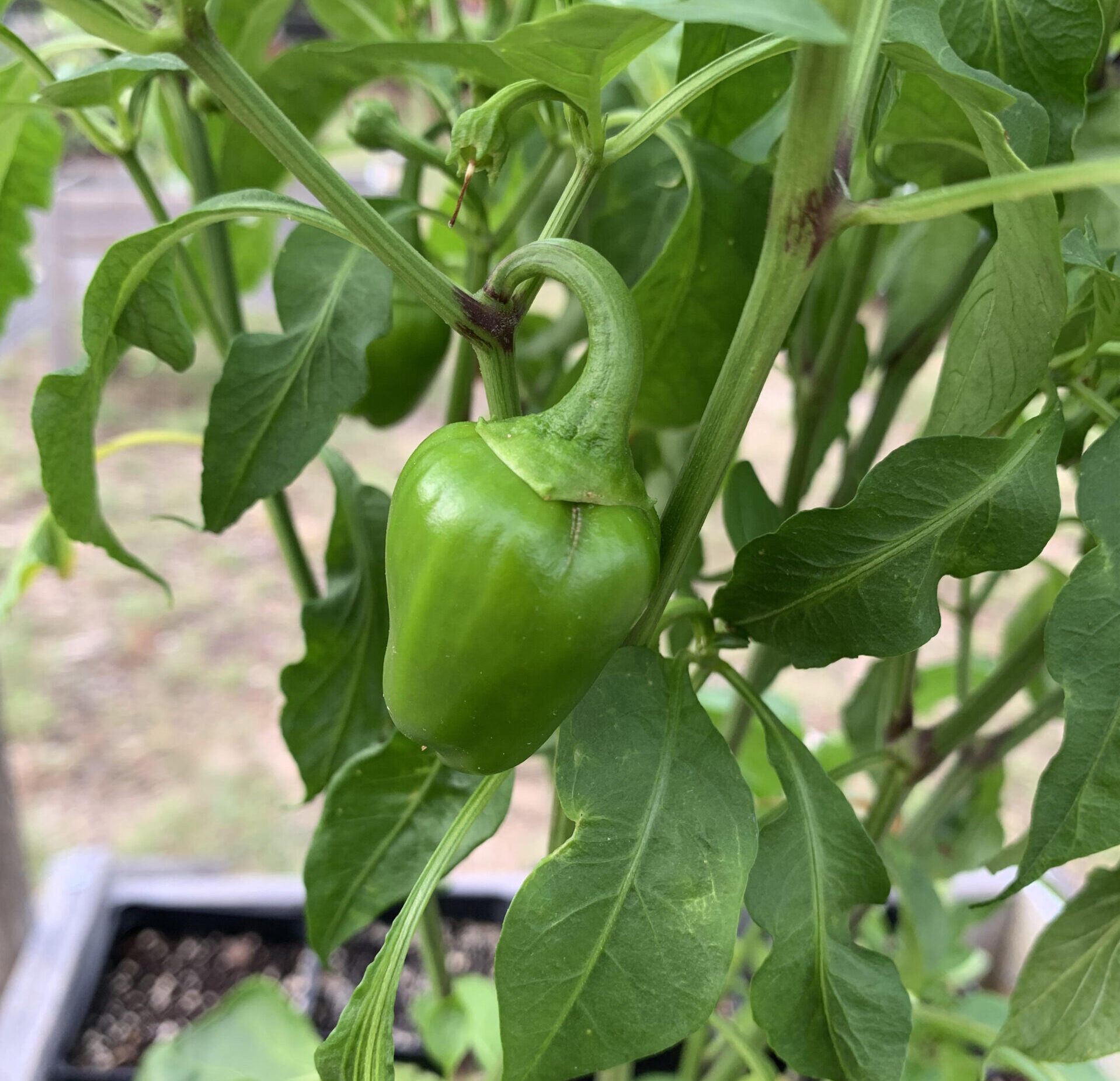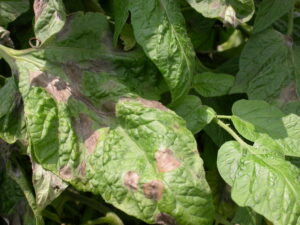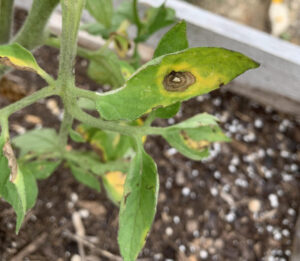If you are like many gardeners, growing peppers and tomatoes is the highlight of the growing season. Thus, it’s no wonder why it is so frustrating when they do not flourish. They may grow well at first, but, at some point, the growth is stunted, and they never quite reach their tomato or pepper-producing potential.
Why do some plants experience slow growth or stop growing altogether? Here are the top eight reasons for stunted development and what you can do to get them growing again.
This article contains affiliate links. If you make a purchase using one of these links, I will receive a very small commission at no additional cost to you, and it will help me maintain this website. Rest assured, I only recommend products I actually like!
1. Improper Temperatures
One reason for stunted growth in tomatoes and peppers is that the seeds or seedlings are planted outdoors too soon, while the temperatures are too cool. Tomatoes and peppers are cold and frost sensitive and only thrive in warm weather. To avoid this mistake, start seeds indoors using grow lights and heat mats so that temperatures reach a level that is conducive to germination and seedling development. (You can learn more about the proper soil temperature for peppers and a variety of other vegetable plants in this helpful article.)
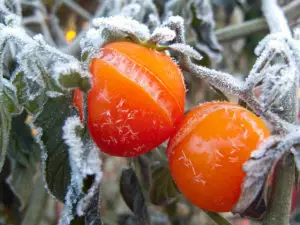
Once nighttime temperatures reach a consistent temperature of 60 F (15 C) or more, transplant the seedlings outdoors, making sure the threat of frost has passed. Alternatively, you can direct sow the seeds when these conditions are met.
2. Transplant Shock
Slow or stunted growth can also be caused by transplant shock, a condition that plants often experience when moved outdoors or from one location in the garden to another. It is usually characterized by wilt, yellowing leaves, or leaf and flower drop.
If moving plants from indoors to the great outdoors, harden them off over a period of several days so that they will become acclimated to their new environment. Once the plants adjust to their new surroundings, the problem should resolve, and growth should resume.
3. Not Enough Sun Exposure
Most vegetables require a minimum of six, and preferably eight, hours of full sun to set fruit. Too little sun will restrict both plant growth and fruit production. One of the benefits of growing in containers is that you can easily relocate the plants to a more conducive location. If your plants are in the ground, you can dig them up and replant them where they will be happier. They may experience transplant shock, but it should be temporary.
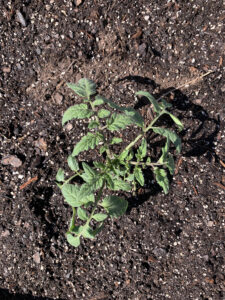
One additional note: peppers are especially sensitive to too much sun and can experience sun scald, a condition that results in wrinkled skin that may also turn into brown spot. If relocating them to a sunnier area, it will help if they have a touch of shade in the afternoon when the sun is the hottest. You can always add a shade cloth for those locations that are too hot. (You can learn how to select the best shade cloth for your garden or outdoor space in this helpful article.)
4. Improper Watering
Improper watering can negatively affect tomato and pepper growth. Too much water will cause the roots to constrict to avoid drowning. While this move may preserve the roots, it will limit the amount of water the plant receives and thwart plant development. On the other hand, not enough water will cause the roots to be underdeveloped and weaken the plant. The best practice is to wait to water plants until the soil is dry to a depth of about 1 to 2 inches (2.5 to 5 cm). Container plants will require more frequent watering.
Inconsistent watering, both in terms of when you water and how much you water, can often result in blossom end rot in both types of nightshades. Thus, consistency is also very important.
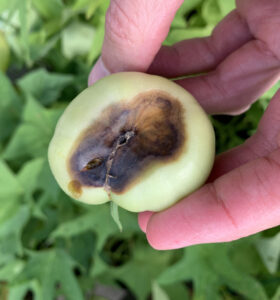
You can use a moisture meter to help you better determine when your plants need watering. Usually, a reading between moist and dry is appropriate, but you will have to test for your area.
5. Nutritional Issues
Another common reason plants fail to thrive is improper nutrition. You may be fertilizing your plants, but you may be using a fertilizer that has the wrong NPK ratio for the kinds of plants you are growing. (You can learn more about fertilizer and NPK in this helpful article.) For example, if you are using a fertilizer that is higher in nitrogen than it is in phosphorus or potassium, the plant will put out lush, green foliage but few, if any, flowers. No flowers mean no produce.
To grow healthy peppers and tomatoes, use a fertilizer that is higher in phosphorus than it is in nitrogen. This is the fertilizer I use because it is formulated with these kinds of crops in mind.
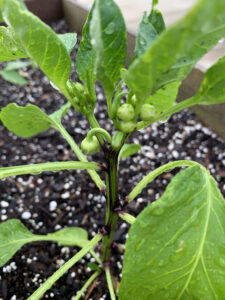
6. Improper Soil pH Levels
In addition to nutrition, the pH level of your soil also plays an important role in plant development. The soil pH should be between 6.0 and 6.8. Anything higher or lower can cause the nutrition that is in the soil to be less available to the plant. Here is the soil test kit that I use to measure both the nitrogen, phosphorus, and potassium levels in my soil, as well as the pH level. It is inexpensive and easy to use. Testing the soil and fixing any deficiencies before planting each spring can help prevent developmental issues.
7. Stress from Pests and Disease
Whenever a plant experiences stress from insects (pests) or diseases, it will refocus its energy on surviving the attack instead of growing or flowering. Thus, it is important to inspect the garden daily for non-beneficial insects and signs of disease before they can get a foothold. A healthy plant is better able to fight off pests and diseases, so reduce all plant stressors like nutritional deficiencies, improper watering, etc., whenever possible.
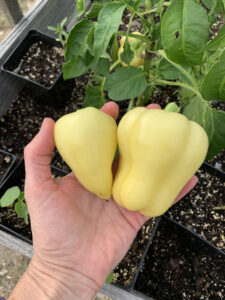
8. Tomato and Pepper Plant Genetics
It can be perplexing to have plants that you started at the time under the same growing conditions grow at different rates. What causes some plants to get stuck developmentally while others flourish? It could simply be a matter of plant genetics. Not all seeds are equally viable, even if they came from the same plant. Sometimes, we just have to chalk up stunted growth to less than ideal genes or seed development.
Understanding these top eight reasons for stunted growth in tomatoes and peppers, and applying the accompanying remedies, should help increase your garden’s productivity.
Thank you for reading this article! If you found it helpful, please consider sharing it with others via email and social media!
